Hi guys,
I decided to open a thread for the best connection I've found between digital transport and DAC, which I consider the discovery of the decade. 😍
Elektro-optik is my invented name for -ECdesigns-' invention/discovery which he uses on his own Fractal DAC with his own digital protocol.
https://www.ecdesigns.nl/info/archive
It is simply using electric digital SPDIF output from the transport and the Toslink receiver from the periferal DAC by replacing the "receiving" connector of an electric digital cable for a 3mm Red LED (I use a mini-to-standard-toslink adapter to secure the LED and connect to Toslink in) AND also increasing the digital signal from stock output to 3V3 - 5V, depending on the transport's output circuit, for example by using the digital signal from the Optical Transmitter of an old DVD or by adding a digital buffer to your stock output.
Another solution for a usable digital signal is to mod a USB to SPDIF specialized external board by connecting the digital signal from the Optical Transmitter to the electric SPDIF out, which usually is 3V3. That would give you the best PC based sound, much better than the ADUM based connection I was using before, and more ellegant. I use modded USB cable with power separated from balanced signal...
A third solution relates to DACs which do not have Toslink receiver: use usual digital coaxial cable to connect transport to DAC and install a toslink receiver sub-circuit inside the box, to go to the digital input circuitry, after the input digital connector+Red LED assembly.
I have tried all of the above and all work OK. The total cost of the experiment should be under USD$10 for the best sound I have experienced. As per -ECdesigns'- explanation, it has the best of both systems with none of their side effects...
I attached some pictures and diagram explaining the process.
I hope you like it.
Cheers,
M.
I decided to open a thread for the best connection I've found between digital transport and DAC, which I consider the discovery of the decade. 😍
Elektro-optik is my invented name for -ECdesigns-' invention/discovery which he uses on his own Fractal DAC with his own digital protocol.
https://www.ecdesigns.nl/info/archive
It is simply using electric digital SPDIF output from the transport and the Toslink receiver from the periferal DAC by replacing the "receiving" connector of an electric digital cable for a 3mm Red LED (I use a mini-to-standard-toslink adapter to secure the LED and connect to Toslink in) AND also increasing the digital signal from stock output to 3V3 - 5V, depending on the transport's output circuit, for example by using the digital signal from the Optical Transmitter of an old DVD or by adding a digital buffer to your stock output.
Another solution for a usable digital signal is to mod a USB to SPDIF specialized external board by connecting the digital signal from the Optical Transmitter to the electric SPDIF out, which usually is 3V3. That would give you the best PC based sound, much better than the ADUM based connection I was using before, and more ellegant. I use modded USB cable with power separated from balanced signal...
A third solution relates to DACs which do not have Toslink receiver: use usual digital coaxial cable to connect transport to DAC and install a toslink receiver sub-circuit inside the box, to go to the digital input circuitry, after the input digital connector+Red LED assembly.
I have tried all of the above and all work OK. The total cost of the experiment should be under USD$10 for the best sound I have experienced. As per -ECdesigns'- explanation, it has the best of both systems with none of their side effects...
I attached some pictures and diagram explaining the process.
I hope you like it.
Cheers,
M.
Attachments
-
 Electrooptic (1).JPG273.5 KB · Views: 144
Electrooptic (1).JPG273.5 KB · Views: 144 -
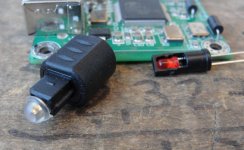 Electrooptic (2).jpg324.2 KB · Views: 141
Electrooptic (2).jpg324.2 KB · Views: 141 -
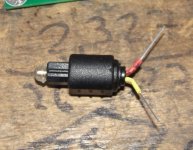 Electrooptic (3).JPG419.1 KB · Views: 143
Electrooptic (3).JPG419.1 KB · Views: 143 -
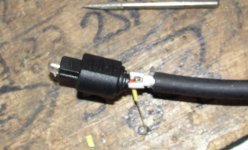 Electrooptic (4).JPG257.6 KB · Views: 128
Electrooptic (4).JPG257.6 KB · Views: 128 -
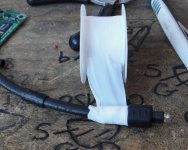 Electrooptic (5).JPG428.1 KB · Views: 137
Electrooptic (5).JPG428.1 KB · Views: 137 -
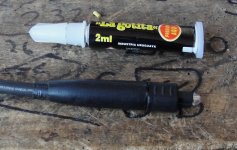 Electrooptic (7).JPG410.5 KB · Views: 130
Electrooptic (7).JPG410.5 KB · Views: 130 -
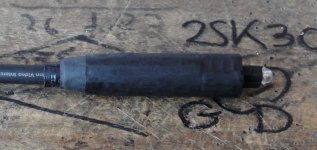 Electrooptic (9).JPG301.7 KB · Views: 139
Electrooptic (9).JPG301.7 KB · Views: 139 -
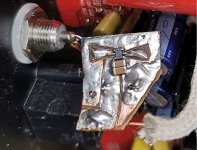 ELECTROOPTIC LINK buffer2.jpg218.7 KB · Views: 143
ELECTROOPTIC LINK buffer2.jpg218.7 KB · Views: 143 -
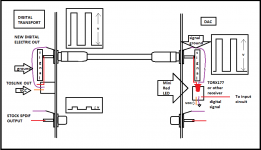 ELECTROOPTIC LINK.png9.7 KB · Views: 157
ELECTROOPTIC LINK.png9.7 KB · Views: 157 -
 ELECTROOPTIC LINK2.png9.9 KB · Views: 144
ELECTROOPTIC LINK2.png9.9 KB · Views: 144 -
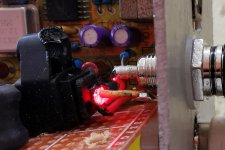 electroptic internal RECEIVER DETAIL.jpg318.1 KB · Views: 150
electroptic internal RECEIVER DETAIL.jpg318.1 KB · Views: 150 -
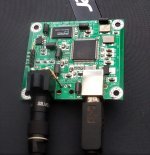 USB to ELEKTROOPTIK.jpg190.7 KB · Views: 151
USB to ELEKTROOPTIK.jpg190.7 KB · Views: 151
Well, to me, the advantage appears to be that you don't need the fibre anymore, which may be a good thing when it comes to reliability (bending/breaking/splicing) and cost. But, then you could simply use the coaxial output which, I believe, also supports higher speeds (192kHz). Correct me if I'm wrong.
what is the advantage over just using optical?
My guess is the answer greatly depends upon your spdif decoding circuit. If it extracts a clock through a PLL, anything upstream becomes very audible. The proposed scheme offers a potentially lower jitter coax transmission coupled with true isolation, unlike the commonly used "isolation" ICs.
yeah I still have some of the old toslink receivers that allow 192khz. i'll dig up a model number. its not standard, but not unheard of.
As I thought, no actual advantage 🙂 Its a cool idea, dont get me wrong, I just dont see the utility over just using optical personally, since that is in essence all you are doing, when using standard spdif. toslink, with a decent receiver circuit and possibly fifo, ie. not using a recovered clock in either case.
I doubt any of us that would consider this circuit are going to worry too much about the expense of an ST or glass fibre cable.
Perhaps if you already have a nice coax cable the length you need and no toslink cable and some time on your hands. I totally get it in that case.
As I thought, no actual advantage 🙂 Its a cool idea, dont get me wrong, I just dont see the utility over just using optical personally, since that is in essence all you are doing, when using standard spdif. toslink, with a decent receiver circuit and possibly fifo, ie. not using a recovered clock in either case.
I doubt any of us that would consider this circuit are going to worry too much about the expense of an ST or glass fibre cable.
Perhaps if you already have a nice coax cable the length you need and no toslink cable and some time on your hands. I totally get it in that case.
Last edited: